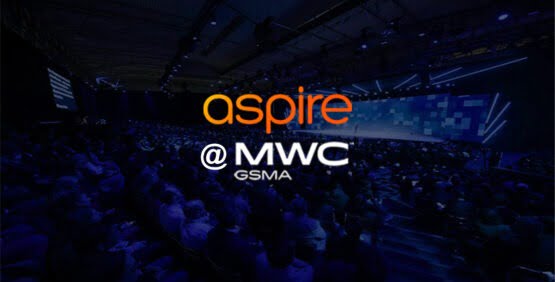
MEC and its advantages on 5G networks
 | Author: Carlos Claudio |
|---|
September 27, 2022
I imagine you have heard already here and there, people talking about MEC, but what is it in reality? Has it any different purpose than all the other products being advertised out there? Let’s see! Multi-access Edge Computing (MEC) is a proven concept that is standardized by the ETSI Industry Specification Group for Multi-access Edge Computing. Initially, this group was founded in 2014 by only 6 initial members, however, the excitement about the possibilities of MEC has spread and today it has grown to over 70 members, composed of telecom operators, network infrastructure vendors, IT/middleware vendors, and independent software vendors.
Purpose
Essentially, what is the purpose of MEC? The technical explanation can be summarised as follows: “It’s a solution that allows users to make use of cloud computing resources at the edge of the network (between radio access and core networks). Edge computing is one of the key pillars for meeting the demand of low latency communications (1 millisecond), and ability to support new segments of businesses where telecommunications networks didn’t exist before”.

Imagine that you want to have a coffee at the pastry shop called “legacy RAN” at the end of the street and that you must pass between all the pedestrians, get in the line to order your coffee, and finally drink it.
Now imagine that you discovered a cafe right in front of you called “MEC”, which has less pedestrian traffic and you don’t have to wait in line to place your order. This is the purpose of MEC, to manage tasks much faster and more efficiently, through higher proximity between network elements.
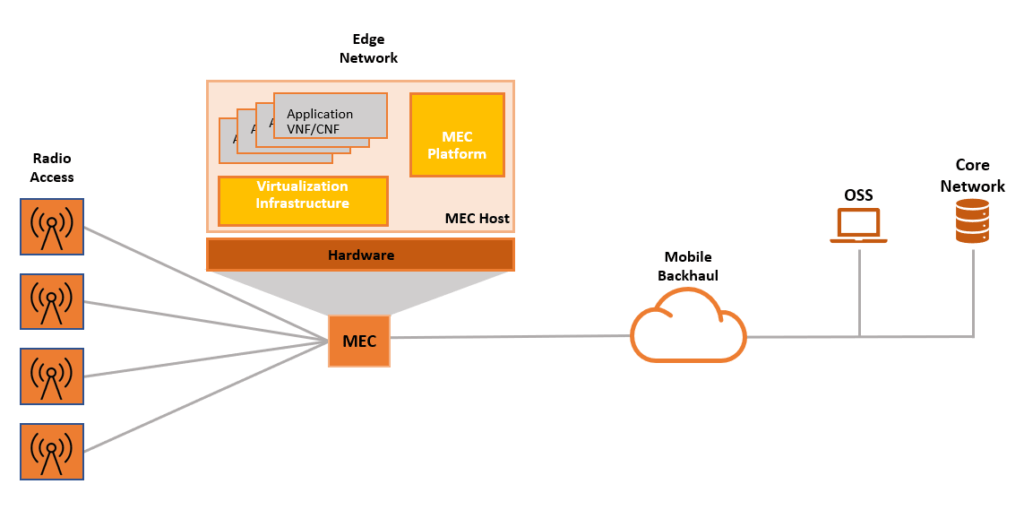
MEC platform is usually deployed on a dedicated server on top of a cloud infrastructure, where also applications running as virtual machines or containers, may be deployed. Looking at MEC in more detail, general entities can be grouped into system level, host level, and network-level entities:
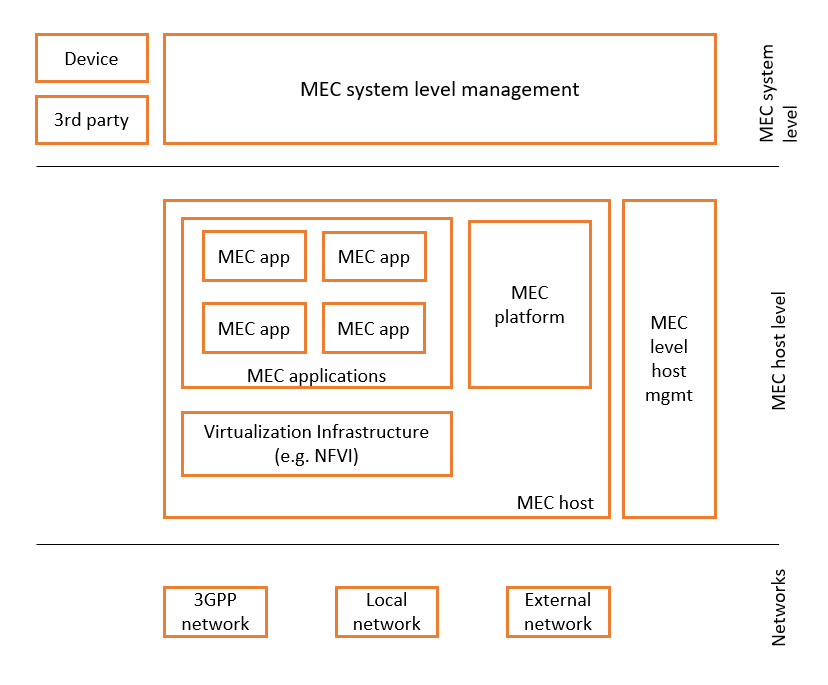
Now, let’s break the MEC host into small pieces and get some ideas of what it’s composed of:
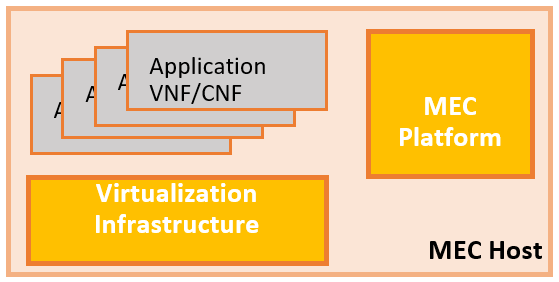
- MEC host is an entity that contains a MEC platform and a virtualization infrastructure which provides compute, storage, and network resources, to run MEC applications.
- MEC platform is the collection of essential functionalities required to run MEC applications on a particular virtualization infrastructure and enable them to provide and consume MEC services (MEC platform can also provide services).
- MEC applications are instantiated on the virtualization infrastructure of the MEC host based on configuration or requests validated by the MEC management.
Use cases
In recent years, particularly with the advent of 5G, there has been a focus on the new Industry 4.0, which consists essentially of Internet-of-Things, Machine-to-Machine communication, Network Slicing, and massive Mobile Broadband. 5G networks will be the main supporting element of Industry 4.0, since they will provide the bandwidth and resources to connect all the new devices, and will be an enabler for several use cases e.g. network slicing, which we will discuss below in more detail!
One of the services that would benefit from the MEC solution would be RAN-aware video services, since TCP throughput may not be able to adapt fast enough to certain varying radio conditions, leading to underutilization of radio resources, degraded end-user experience (due to high buffering) and… In another wording – imagine turning on a faucet and discharging water through a clogged drain, some of the water will flow as expected, but some will flow backward due to the obstruction in the drain.

Now imagine again that you have an equipment that can detect where the obstructions are in real time, and then regulate the amount of water to be discharged through the drain. The wasted water will be less, correct? One of the most common use cases of MEC is precisely offering a “throughput guidance”; recalling RAN-aware video solution, guidance will be towards a video server, informing the server about optimal bit rate to use for certain radio conditions.
Another use case to be explored soon is the vehicle-to-infrastructure (V2I), which require low latency (may extend to ultra-low latency) to process information to e.g. stop, start driving a vehicle, remote surgery, autonomous robotics in hazardous industries, etc. I guess here no need to recall for imagination!
Some of these use cases can be implemented through MEC with network slicing, different services demand different control-plane capabilities, so network operators will be able to build multiple virtual networks over a shared infrastructure, segmenting data traffic according use case needs.
Finally, for those who want to explore a bit more on how it’s possible to slice networks within MEC, the following figure shows how is deployed in an integrated manner in 5G network:
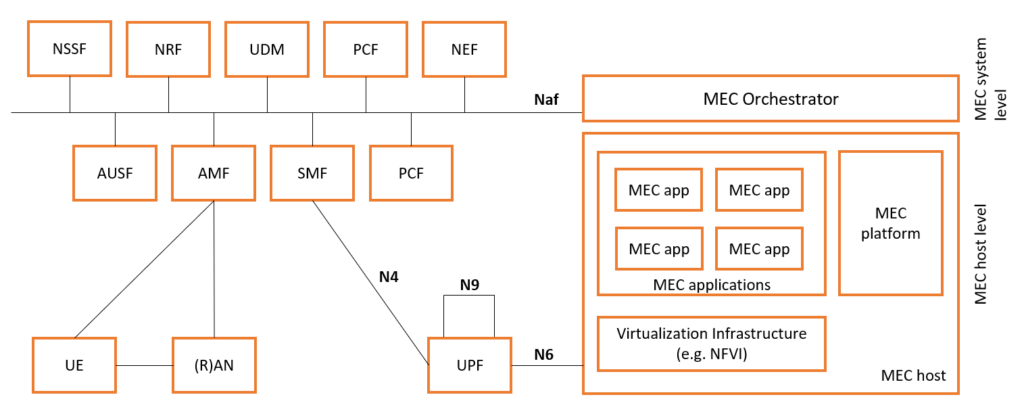
By following ETSI whitepaper, it is assumed that MEC is deployed on the N6 reference point, i.e. in a data network external to the 5G system. This is enabled by flexibility in locating the UPF (User Plane Function). The UPF has a key role in an integrated MEC deployment in a 5G network. UPFs can be seen as distributed and configurable data plane from MEC system perspective. The control of that data plane, now follows NEF-PCF-SMF route. Consequently, in some specific deployments the local UPF may even be part of the MEC implementation. This means MEC can execute radio and core network elements within same host! This is just an example of how easy can be to slice E2E networks with MEC.
What’s next?
As seen, MEC has still many potentialities to be explored, many deployment scenarios to be tested, therefore, several use cases to implement. Thanks to a deep understanding of MEC and the relevant standards and continued competence development in this area, Aspire Technology can offer development of MEC applications both on the customer MEC platform and including deployment of the MEC platform in the first step.
Our own developed “Hello World” MEC application that enables active device location tracking and discovering information on the current radio conditions in the real-time provides the basis for our MEC edge video optimization/orchestration show case mentioned above. In addition, Aspire’s innovative portfolio of services includes consultancy and/or testing and verification within the MEC area, in different environments, where some synergies between operator deployment and our Lab may bring mutual benefits. We are more than happy to explore.
References:
- https://portal.etsi.org/TB-SiteMap/MEC/List-of-Members
- ETSI White Paper No. 28, MEC in 5G networks
- ETSI ISG: Mobile Edge Computing (MEC); MEC Framework
- ETSI ISG: Mobile Edge Computing (MEC); Framework and Reference Architecture
- ETSI ISG: Mobile Edge Computing (MEC); Proof of Concept Framework






